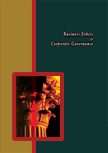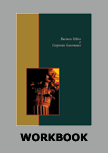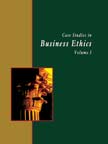Ban of Tobacco Ads by the Government of India




|
|
ICMR HOME | Case Studies Collection
Case Details:
Case Code : BECG002
Case Length : 8 Pages
Period : 1981 - 2001
Pub. Date : 2001
Teaching Note : Available
Organization : Indian Tobacco Company Philip Morris
Industry : Food,
Beverages & Tobacco
Countries : India
To download Ban of Tobacco Ads by the Government of India case study (Case Code:
BECG002) click on the button below, and select the case from the list of available cases:

Price:
For delivery in electronic format: Rs. 300;
For delivery through courier (within India): Rs. 300 + Rs. 25 for Shipping & Handling Charges
» Business Ethics Case Studies
» Case Studies Collection
» ICMR Home
» View Detailed Pricing Info
» How To Order This Case
» Business Case Studies
» Business Case Studies
» Case Studies by Area
» Case Studies by Industry
» Case Studies by Company

Please note:
This case study was compiled from published sources, and is intended to be used as a basis for class discussion. It is not intended to illustrate either effective or ineffective handling of a management situation. Nor is it a primary information source.
|
|
<< Previous
The Ayes' Contd...
|
In a case which started in 1991 and ended in 1997, RJ Reynolds Tobacco company, marketer of Camel cigarettes, was forced to withdraw its mascot, Joe Carmel, an animated camel, from all its advertisements, after the California Supreme Court (USA) ruled that the company could be prosecuted for exploiting minors.
The accusation was that the slick, colourful advertisements (using an animated camel) appealed to the children and encouraged them to smoke. In India, analysts estimated that cigarettes contributed only 0.14% of the G.D.P and the health costs roughly translated to 0.21% of the G.D.P.So the revenue logic of huge contribution in the form of excise to the Exchequer
did not seem to be valid. |
|
Also, given the state's significant contribution to health care, smokers, by damaging their health were in fact enhancing the State's expenditure.
Questions were also raised about the economic impact of such a ban, given the fact that the tobacco industry provided direct and indirect employment to 26 million people.
However, a study on tobacco consumption and employment3, showed that effective policies to reduce smoking were likely to increase, and not decrease employment. The reason for this was that when people stopped smoking, the money did not disappear from the economy. It was spent on other goods and services, which the study showed, were more labour intensive. This, in turn produced more jobs.
|
The impact of cigarette advertising on consumers was another contentious issue. A World Bank report4, had pointed out that policymakers who wanted to control tobacco should be aware of the fact that bans on advertising and promotion would prove effective, only if they were comprehensive-covering all media and all uses of brand names and logos.
The report also published the details of a comprehensive study of over 100 countries, comparing the consumption trends over time in those countries where were relatively complete bans on advertising and promotion and where were no such bans5. In the countries with nearly complete bans, the downward trend in consumption was much steeper (Refer Figure 1).
|
|
In 1992, the Department of Health (DOH), UK reviewed various forms of evidence to assess whether tobacco advertising affected the aggregate demand for tobacco products.6 Four countries (Norway, Finland, Canada and New Zealand) were chosen, as these countries had already imposed an advertising ban and enforced it effectively. The main conclusion of the DOH was that the evidence available on these four countries indicated a significant effect. In each case, the banning of advertising was followed by a fall in smoking.
In 1997, in a similar study for the International Union against Cancer, the available data in the same four countries was examined7. It was found that per capita consumption of cigarettes (15 years +) had dropped between 14 and 37 % after the implementation of the ban. (Refer Table I).
In three out of the four countries, smoking among young people had decreased, while in one it remained stable. The conclusion was that advertising bans worked if they were properly implemented as part of a comprehensive tobacco control policy8...
Excerpts >>
|
|




